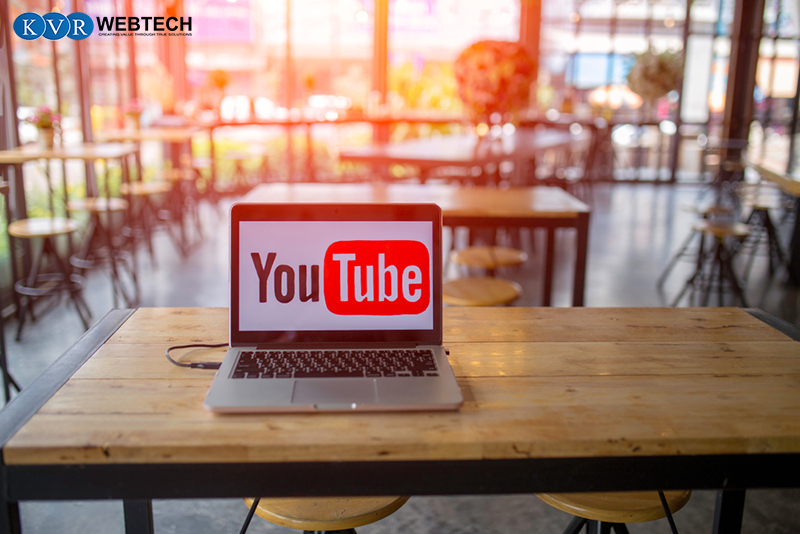
Are you not getting views on your YouTube videos? Or you are doing it for the very first time? These tips call your attention.

You Know….
- 5 billion videos are watched on YouTube every single day.
- YouTube is the largest search engine after Google.
- YouTube makes up over 25% of the total global Internet traffic.
- People spend 8 minutes and 41 seconds each day on YouTube.
- People prefer watching YouTube videos than read user manual. Nearly 50,000 years of product review videos have been watched so far.
This is why YouTube has emerged as the most profitable marketing platform over the years. Not surprisingly, the number of small and medium-sized business has doubled when it comes to advertising on YouTube since 2016.
YouTube is a great opportunity to maximize your marketing impact.
Does it mean that you should drop your videos insanely to your YouTube channel?
Right? No, that’s not right.
With billions of active users, YouTube is a nation in itself. Any average business genre must have thousands of competitors, if not millions, over there who are doing well.
Therefore, it will be easy to get lost in the sea of thousands of videos related to just your category.
If you don’t want to meet this fate and keep amazed with likes and subscription, optimize your YouTube channel.
Below are the strategies that will help your videos be found by YouTube users.
1. Research Your Keywords:
Keywords are the foundation of all types of content over the Internet. And YouTube is no exception.
You need sound keyword research to kick start your YouTube SEO in a great way.
Once you come up with some good keywords as well as their semantics, you can create a well-optimized description, tags, and title.
Here’s how you can find those traffic generating keywords for YouTube videos.
-
Use YouTube Search Suggest Feature:
Type a word or phrase on the YouTube search bar. For example, your video is about “gardening tips”. So type it in the search bar to get the related terms used by other YouTube users. They are popular keywords. Copy them so that you can use them in your descriptions, tags, and titles.

-
Draw Keywords from the Most Popular Videos of Your Niche:
Take note of the most popular videos over YouTube in your niche to see which keywords they are optimized around. Just see the keywords used in video tags, titles, and descriptions.
-
Use YouTube Traffic Source:
YouTube Traffic source in YouTube Analytics is another wonderful way to find the traffic generating keywords for your videos.
-
Use Google Results:
Make sure you have the keywords that have video results in Google also. This will help you optimize your videos for the keywords that show video results in Google. This will help you get traffic to your video directly from Google’s first page.
Use your Google Keyword Planner to find out the keywords that get at least 100—1k searches per month in Google.
2. Include Target Keyword in Your Video File (Before You Even Upload):
How do you title your video file before you upload it to YouTube?
Does it include the targeted keyword?
For example, if your video is on house paint DIY tips, make sure your video file is saved with that name or should include this keyword in the title.
Why does this matter?
This is because YouTube can read the name of your video file along with the codes that come with it when it’s uploaded.
Therefore, the video on house paint DIY shouldn’t be named randomly like “XYZ.MOV” or “Paint.AVI”. Instead, it should include your main keyword—“House Paint Job DIY Tips.AVI”.
So this is one of the key things to do while optimizing video for YouTube.
3. Place Keyword Naturally in the Video Title:
A title is a very first thing our eyes catch while searching for YouTube videos.
This not only acts as a banner but also make or break the viewer’s interest in your videos. So it goes without saying that a video title should be clear and compelling.

In this context, the keyword should be placed naturally so that it closely matches the viewer’s search term.
Here are the ways to create a well optimized YouTube video title according to the SEO writing and user’s search intent as well.
- Your titles should include the term video. This is because most people use this term while searching for videos on Google. For example, Link Building Video for your videos on link building tips.
- The title should describe your video.
- Use the words or phrases like “How to”, “Best”, “Genius Hacks”, and “Greatest” to evoke the user’s curiosity. For example, “Some Best Shirts Hack you probably know”. But the video should deliver what the title promises.
- One more thing—the title of the video should be no longer than 60 characters to avoid it cutting off in the video results.
4. Create an Informative as well as SEO Friendly Description:
A well-optimized description can help you get higher rankings in YouTube searches.
A description is a kind of metadata that helps YouTube understand the content of your video.
Here’s how to create an ideal description for your YouTube video:
- Make sure to include your main keywords in the beginning as YouTube only displays the first 2-3 lines of a description. Besides, the starting should evoke a “sense of urgency” and speak the benefits of the video. In other words, it would be a snippet for your description.
- Afterward, create a long description of 300-350 words as it covers all keywords.
- Repeat the keyword 2-3 times throughout the copy.
- Also, use related or semantic keywords. For example, you can use phrases like SEO tips, getting started with SEO and doing SEO along with your keyword “How to Do SEO”.
- Last but not least—keep the description original and engaging. Don’t forget to place your social media and website links in it.
5. Create an Engaging Video:
Is your video engaging? Can people watch it for long?
If your video keeps people on YouTube, your video is more likely to rank higher in the YouTube search results.
Here is a no-nonsense piece of advice to make a video that can retain people for longer: Watch the video yourself and show them to others to find out the areas of improvement.
Besides creating an engaging YouTube video, there are many other things that can make a difference.
- Always respond to people’s queries and comments on your video to spark off conversations.
- Use Google Trends to find out the optimal time to share your videos with your audience.
- The video should be 20 minutes long at least.
Creating a well-optimized video will definitely benefit your business.
6. Promote Them:
To increase your viewership and subscription, you need to promote the video also. And there are many ways to do that. Some of them are…
- Providing a simple link to your video in your email signature.
- Embedding videos in your blogs or landing pages.
- Promoting them via your social media channels like Facebook.
- Create a playlist if your channel has a few videos. This will let your audience watch all of them smoothly.
- Ask your friends, colleagues, and employees to share the videos.
7. Create Attractive Thumbnails:
Video thumbnails are the primary images that are displayed in the search results.
While YouTube automatically generates thumbnails for your videos, it is better if you make your own. You need to keep it engaging and attractive to make it look standout.
Most users click the search result just because of its attractive thumbnail.
You can get creative with it. For example, your thumbnail can show you in the shower of money if your video is all about growing finances. But it shouldn’t be misleading. The 1280 x 720-pixel image will look good on most screens. There are many tools like Stuffonix.com where you can make engaging thumbnails.
Putting these tips into practice will help your YouTube videos get ranking, views, and subscriptions.
However, these tips should be implied sensibly, rather than following them like commands. Although you may not get overnight results with these tips, it is for sure that you will ripe the benefits in the long run.
What do you think? Do you have other YouTube optimization tips to share with us?
We are awaiting them in the comment box given below…

An enthusiastic Human Being with a zeal to express as much she can in words… and Blogs gave her a medium to express and share her knowledge. Has written for eminent blogs and fields like the social media, internet marketing, technology, lifestyle (tattoos, body art, fashion, etc.), politics, and the list is still increasing.

